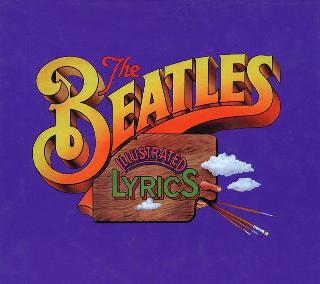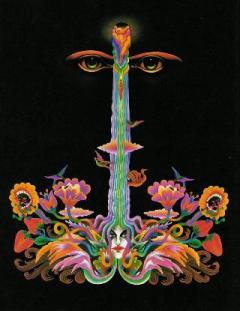Index
Home
Vorige
Wild Honey Pie
Composer(s) : Lennon and McCartney
Year : 1968
Chords/Tabs: Wild Honey Pie
Notes on "Wild Honey Pie" (WHP)
KEY G Major
METER 4/4
------ 3X ------
FORM Break -> Refrain -> Outro (w/complete ending)
GENERAL POINTS OF INTEREST
Style and Form
- This little bonsai tree of a song compels our interest from at least
three perspectives, no matter how slight you may find it in terms of
content.
- The first thing to note is how the song seems to be purposely placed
where it is to keep you diverted and/or distracted while the stage
hands change sets, as it were, during the entr'acte separating
"Ob-ladi, Ob-la-da" from
"... Bungalow Bill." The gesture represents
a theatrical exploitation of the LP album qua "medium" that is not
to be under-estimated.
- Secondly, this song is, in terms of form, much more of a complete
miniature than an offhanded fragment; as long as you're willing to
step back and accept a rather minimalistic/schematic definition of
"form." Paul would play this trick at least twice more with
"Why Don't We Do It In The Road"
and "Her Majesty." The "Brother, can
you take me back ..." coda to "Cry Baby Cry"
provides a clearly
fragmentary counter example. And the mini-medleys of, say,
"Happiness is a Warm Gun"
and "You Never Give Me Your Money" alternatively
suggest how similar fragments can be successfully integrated
to produce a whole that is greater than the sum of the parts.
Melody and Harmony
- There's not much of either here but what fits, we print :-)
- The harmonic vocabulary essentially is no more than a semi-
chromatic chord stream of dominant seventh chords, with *just
enough* root movement included to establish a very bluesy kind
of G Major as the home key. The blues are conjured here by the
appearance of I with its dominant 7th, and the implied Major/minor
cross-relation on I that is most pronounced at the very end of
the song.
- The way in which you hear B-natural topping the G Major chord at
the start of this track in comparison with having most recently
heard it as the root note of the previous song is a delightful
cracked-mirror effect; one that was not lost on the likes of
Beethoven, Schubert, and Bizet! (W.r.t. the latter, check out
the Ouverture to "Carmen;" the outer sections are in A Major,
but the Torreador Song middle section is abruptly in F.)
Arrangement
- This is the first (in terms of order of appearance) of what would
turn out to be a small, widely scattered group of tracks in which
Paul, in spite of the relatively primitive techniques of the time,
would self-produce himself as a one man band.
- The backing track is dominated by a harpsichord, a drumming part that
might have been thumped on an old skiffle tea chest, and what sounds like
a "dobro" (or other very steely-sounding) guitar played with a glassy,
comically inaccurate slide.
- The vocal track is filled with twisty overdubs, all different,
many of which sound like Paul's personal incarnation of some Monty
Python-like Ministry of Funny Voices; it's a perennial Brit-humor
thing, like dissing Roman Catholics.
SECTION-BY-SECTION WALKTHROUGH
Break
- The opening instrumental section which repeats three times more or
less verbatim is an unusual 7 measures long; even for such a throwaway,
they'd take the time to do something a little offbeat:
|G |- |F |- |E |Eb |D |
G: I V
- All the chords are dominant sevenths; listen to the harpsichord
part in which you can here the descending parallel set of tritones
in the right hand: F/B -> Eb/A -> D/G# -> C/F#. The only chords
that deserve Roman numerals are the I-V pillars.
Refrain
- The V chord that ends the break is resolved by this simple sung
refrain whose lyrics are no more complicated than two-thirds of
the song's title:
|G7 |- |- |- |
I
Outro
- The outro is just an extension of the refrain in which an unusually
altered version of the V chord is used to make the final cadence:
-------------- 2X ---------------
|G |- |d half dim |- |
I v7 (b5)
|G |- |
I
- The bassline movement in the final measures goes from G to F and
back again, tempting me to analyze the penultimate chord as f minor,
or flat minor(!) VII. However, the persistence of the pitch D as
a melodic type of pedal tone suggests that the chord is rooted on
D (with both flattened 3rd and 5th), appearing in its 1st inversion;
i.e. spelling it from the bottom up, F/Ab/C/D.
SOME FINAL THOUGHTS
- So, we find Paul playing tigers, again; this time with a rather amusing
put-on of what might be stylistically described as a blue-grass,
back-woods, ("Black Mountin Hills"?) melange. And that brings us
to the third point of interest.
- ALL the Beatles albums are stylistically diverse. Don't kid
yourself; this is true even of the early ones some of you are used
to dismissing more homogenized and somehow less profound than they
truly are. But, against this backdrop, the White Album still
represents not just a high water mark for sheer number of diverse styles
included in a single collection, but it also courts an aesthetic of
stylistic surprise, non-sequitor, and sound-bite.
- For an album whose vanishing point is in the environs of
"Revolution 9"
followed by
"Good Night,"
you could say that the rapid string of costume
changes here in the middle of side 1 (don't forget to include the little
flamenco cadenza for acoustic guitar in e minor), are an early clue to
the new direction.
Regards,
Alan (awp@world.std.com)
---
"... four of fish and finger ..." 081797#134
---
Copyright (c) 1995 by Alan W. Pollack
All Rights Reserved
This article may be reproduced, retransmitted, redistributed and
otherwise propagated at will, provided that this notice remains
intact and in place.
Ook op The Beatles [White Album]:
(c) 2024 Serge Girard


 (c) Alan Aldrigde, The Beatles Illustrated Lyrics
(c) Alan Aldrigde, The Beatles Illustrated Lyrics